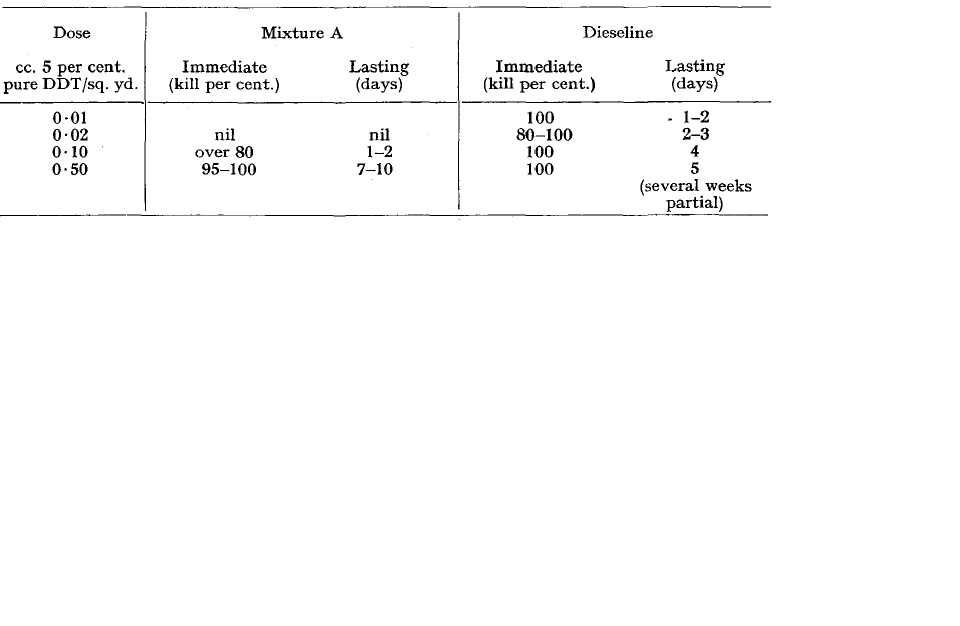Published online by Cambridge University Press: 10 July 2009
(a) Small field experiments (not attempts at control) are described with DDT in emulsion and in solution in mineral oils, 5 per cent, pure DDT in each material. These were tested on mosquito larvae (mainly A. funestus) under conditions that provided good opportunities for repetition and measurement of dose per unit area. Considerable day to day fluctuations were observed in numbers of larvae obtained by dipping, before the insecticide was applied.
(b) Preliminary work showed that kerosene, or dieseline without DDT, were not larvicidal in doses up to 0·5 cc./sq. yard. The dose of oil that was harmful was not determined.
(c) It is clear that DDT, either in oil or as an emulsion, is a very effective larvicide, as is well known from work (mostly unpublished) in many parts of the world.
(d) One may compare the effectiveness of DDT as an emulsion (Mixture A) and in solution in dieseline, as follows:—

It is clear that, under these rather precise conditions of testing, the dieseline solution is more effective than the emulsion both in the minimum amount required to kill, and in lasting effect.
(e) Field tests seem to indicate that DDT dissolves from oil into water, so as to make a larvicidal solution, at least when the water is shallow.
(f) Even if one puts down a relatively high dose (say 0·10 cc. of 5 per cent. DDT per sq. yard, at least ten times the quantity that will kill all larvae) the effect passes off in a few days, even on stagnant waters. It is not known what happens to the DDT, and difficult to know why it disappears.
(g) A heavy dose of DDT (0·50 cc. as above) gives a period of complete kill, followed by a period of partial irregular control. This was more often observed with solutions of DDT than with emulsions and might last as much as four weeks. No explanation of this irregular effect is put forward. It seems most difficult to understand how an insecticide, applied over an area of only a few square yards, can continue to kill some but not all larvae for a period of weeks.
(h) Except in one experiment, in which emulsion destroyed small fish, there was no evidence that creatures which prey on mosquito larvae were destroyed. There was no reason for thinking that after the population of mosquito larvae got back to normal it rose to exceptionally high figures (as it might have, had the predators been decimated).